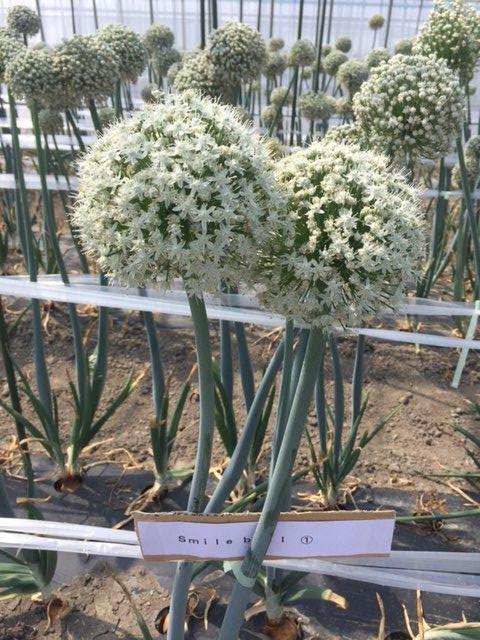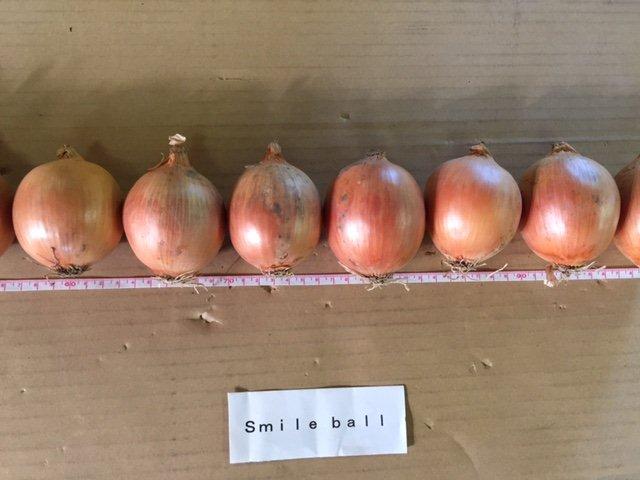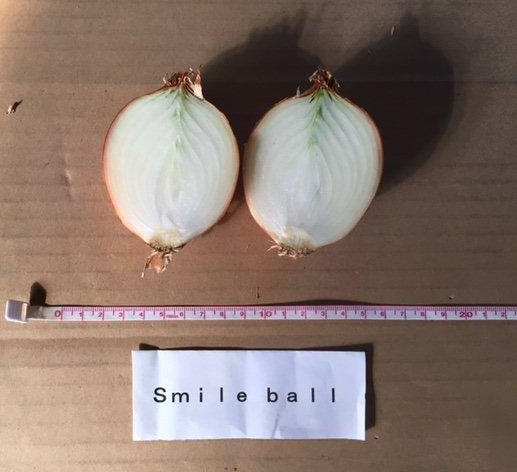SK20
| Denomination: | 'SK20' |
|---|---|
| Botanical Name: | Allium cepa |
| Applicant/Holder: |
House Foods Group Inc. 1-5-7, Mikuriyasakae-machi Higashiosaka-shi 577-8520 Japan |
| Breeder: |
Masahiro Kato, House Foods Group Inc., Higashiosaka-shi, Japan Noriya Masamura, House Foods Group Inc., Higashiosaka-shi, Japan Shinsuke Imai, House Foods Group Inc., Higashiosaka-shi, Japan Junji Shono, Saitama-shi, Japan |
| Agent in Canada: |
Smart & Biggar LP P.O. Box 2999, Station D 55 Metcalfe Street, Suite 900 Ottawa, Ontario K1P5Y6 Canada Tel: 613-232-2486 ex. 1279 |
| Application Date: | 2019-10-25 |
| Provisional Protection:: | 2019-10-25 |
| Application Number: | 19-10026 |
| Grant of Rights Date: | 2023-08-25 |
| Certificate Number: | 6887 |
| Grant of Rights Termination Date: | 2043-08-25 |
Variety Description
Description:
PLANT: medium number of leaves per pseudostem, seed-propagated, long day length requirement for optimal bulb production, early to mid-season harvesting maturity, sprouting during storage occurs mid-season, weak male sterility
PSEUDOSTEM: short to medium height up to highest green leaf, small to medium diameter at midpoint of length
LEAF: erect attitude, strong waxiness, absent or weak cranking, short, small diameter
LEAF BLADE (UPPER SIDE): medium to dark green
BULB: absent or very weak tendency to split into bulblets, small to medium sized, medium height, small to medium diameter, medium to large height to diameter ratio, maximum diameter positioned towards stem end, broad elliptic to broad obovate in longitudinal section, rounded stem end in longitudinal section, weakly tapered root end in longitudinal section, greenish epidermis of fleshy scales, very low to low number of growing points per kilogram, medium dry matter content, absent to very weak tendency to bolt in spring sown trials
DRY SKIN (AFTER HARVEST): strong adherence, medium thickness, basic colour medium to dark brown, no additional hue
Origin & Breeding History: 'SK20' originated from a mutation introduced to the variety 'Super Kitamomiji' at the RIKEN RI-beam factory in Saitama, Japan in 2005. Approximately 1500 dry seeds were irradiated with neon ion beams at 20 Gray to produce M1 seeds and, in 2006, 1450 of these seeds were sown in cell trays. The resulting seedlings were grown in a vinyl house and 1000 of those seedlings were transplanted in a field in Hokkaido, Japan. From the M1 generation, 457 bulbs were harvested in September, screened with an organoleptic assessment and analyzed using high-performance liquid chromatography. Nine onions were selected based on lachrymatory factor production, and self-pollinated in 2007. In 2008, the resulting 350 M2 seeds were cultivated and bulbs further analysed for alliinase content. Twelve bulbs were then selected based on reduced alliinase content. From 2009 to 2011, plants of selected bulbs were self-pollinated with further selections made at each generation for alliinase protein activity resulting in 158 M4 bulbs in 2012. From 2013 to 2017, onion bulb cultivation and selection was based on bulb size, shape and seed quantity.
Tests & Trials: The detailed description of 'SK20' is based on the UPOV report of Technical Examination, application number UIG1075, purchased from the Naktuinbouw in Roelofarendsveen, Netherlands. The trial was conducted by the Naktuinbouw in Roelofarendsveen, Netherlands from 2018 to 2019.
Click on image for larger view

Onion: 'SK20'
Click on image for larger view

Onion: 'SK20'
Click on image for larger view

Onion: 'SK20'
- Date modified: